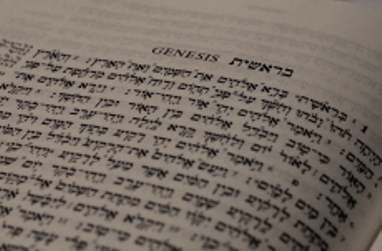 If you still aren’t convinced that learning biblical languages is worth the effort and time it will take to learn them (which is not as much as you imagine), I’ll list an additional 3 ways that learning biblical languages can enhance your ministry.
If you still aren’t convinced that learning biblical languages is worth the effort and time it will take to learn them (which is not as much as you imagine), I’ll list an additional 3 ways that learning biblical languages can enhance your ministry.
Remember! when I use the phrase, “every Christian leader” I intend lay leaders like small group leaders, bible teachers, adult Sunday School teachers and the like. Of course, every Christian who is serious about reading the Bible would benefit just as much.
10. Learning biblical languages will give you access to text criticism. There are many manuscripts upon which English translations are potentially constructed. While Biblical manuscripts are amazingly well preserved, there are still changes that make their way into the text; scholars can track them. Without at least a rudimentary knowledge of biblical languages, you are a stranger to the entire discussion and unqualified to offer an opinion or to evaluate the opinions of others.
- 2 Samuel 21:19 is quite clear when it declares, “and Elhanan… struck Goliath the Gittite…” 1 Chronicles 20:5 has quite a different take on the situation. It reads, “and Elhanan… struck… the brother of Goliath...” While the text has several text issues, I’d like to illustrate with the contrast between the sign of the direct object in 2 Samuel introducing the victim of the striking and the phrase אחי brother of in 1 Chronicles. In Matthew 5:18, Jesus said that not the smallest jot or tittle would disappear from the Law until all had been accomplished. The jot is the Hebrew letter י (y) such as the one that marks אחי brother in 1 Chronicles. The tittle is the small fleck that distinguishes various Hebrew letters. The difference between the letters ח, as found in אח brother in 1 Chronicles and ת as found in the sign of the direct object את in 2 Samuel is the tittle found at the bottom of ת. One has a jot and no tittle and other has a tittle and no jot.
- Someone, somewhere, at some time made quite a mistake.
11. Learning biblical languages will allow you to read the poetry in biblical poetry. What makes a poem a poem is not its information content, but, rather, its art, the subtle plays of sound and rhythm. Analyzing a poem as a poem is more than a little tentative in English… the poetry is in the Hebrew. Throughout the Bible, you will find unmentioned alliteration, acrostics, puns, onomatopoeia, assonance, consonance, spoonerism, homonym, homophone, acronym, etc. These are not unimportant.
- The opening line of Genesis בראשׁית ברא ber’oshit bar’a.. is complex alliteration repeating the first three letters in rapid succession.
- Those who claim that Esther does not record the name of God have missed the powerful use of acrostic in Esther, where YHWH’s name is etched into two important KING statements. In 5:4 where it says, “If it please the king, let the king and Haman come today…” the first letter of each of the four Hebrew terms after King spell out YHWH. In 7:7 where it says “…but Haman stayed to beg for his life from Queen Esther, for he saw that harm was determined against him by the king” the ending letter of the four words preceding “by the king” form YHWH.
12. Learning biblical languages will allow you to observe literary relationships properly. Literary relationship are the kinds of connections between people, places, time, things, events and ideas that a writer makes in order to preach complex messages. A good portion of these are built out of specific words and phrases and grammatical constructions. The more subtle connections are often lost in translation.
- In I Thessalonians 1:4ff, Paul unpacks the reasons for his conviction that the Thessalonicans are elect of God. The power of this conviction is mapped out using the Greek term ginomai… whose importance for the passage is obliterated in almost all translations by giving the term a different translation in each instance… missing the point, I think. It works the idea of transformation… a becoming. What the words they spoke became among them. What Paul and his companions became before them. What the Thessalonicans themselves became through the encounter. What their testimony became throughout the world.
Convinced yet?
[1] Media pic taken by John Donnelly
Discover more from Biblical Literacy with Dr. Andrew D. Sargent
Subscribe to get the latest posts sent to your email.


